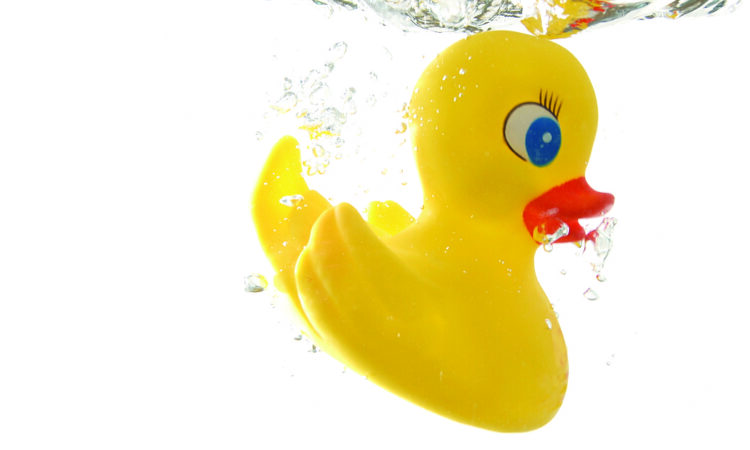
Every Friday afternoon, I am swept into the world of elementary school economics.
Candy remains the most valuable commodity for kids. I’m convinced my kids learned to read because they were incentivized by sugary treats. However, a new currency is fast becoming the most influential force in my son’s fourth grade class.
Rubber duckies.
All three of my elementary-age kids have some form of in-classroom currency. They can earn money via good behavior, accurate schoolwork, reading minutes and so on. At the end of the week, the kids can use their class dollars to purchase items from the teacher’s store.
For the longest time, I assumed the teachers only sold candy, because my kids never came home with anything else.
The cash-to-candy exchange rate is borderline predatory, too. A hundred dollars for a pack of Smarties? Highway robbery! Then again, I’m assuming the teachers are paying for treats out of pocket, so they deserve to set their own prices.
While still blowing some cash on candy, my fourth grader has recently accumulated a small army of rubber duckies. They come in a variety of colors and styles (ducks that look like snowmen, ducks that wear camouflage, etc.). My son names them all, then expects me to remember all their names (in addition to all the Squishmallows occupying my house). Even though he tries to keep the names simple for me — Blackie, Bluey, Snowy, Quackie — I usually just refer to them all as The Ducks.
In addition to the Official Teacher Store, ducks take up a huge segment of the classroom’s secondary market. Classmates often offer their own ducks and other luxuries (erasers, pencils, fidget toys) in exchange for more classroom dollars. I assume this underground market began with one cash-strapped kid in desperate need of a Friday afternoon candy fix.
I also imagine at least one entrepreneurial kid who found some cheap ducks out in the real world and brought them into school as contraband for the express purpose of acquiring candy. It’s likely a kid with braces hoping to sneak some sticky deliciousness outside the watchful eye of their parents. Personally, I know my braces-wearing middle schooler would deploy this tactic in a second if given the opportunity, as she already sneaks sticky, hard-shelled candy during school hours. I know this because I’m the one who drives her to the orthodontist when she needs to fix one of her brackets.
Back to my son’s class and the ducks: This Quack Economy also includes a service industry. My son periodically pays 60 classroom dollars for “duck cleaning.” Initially, I imagined the classroom had one of those ball-cleaning boxes you see out on the golf course. In reality, I think there’s a kid in my son’s class who likes to play in the classroom sink, and so this service is an excuse to splash water around. Is this service teacher-sanctioned? Why does it cost so much money? Why are the other kids paying for a service they can do on their own?
Luxury. Just like a real economy, the kids blow large amounts of cash on needless luxuries. Yes, I could make my own coffee at home, but the barista makes it better. I just hope this 10-year-old duck cleaner has proper credentials.
• • •
Tyler Wilson is a freelance writer, full-time student, and parent to four kids, ages 6-12. He is tired. He can be reached at twilson@cdapress.com.

